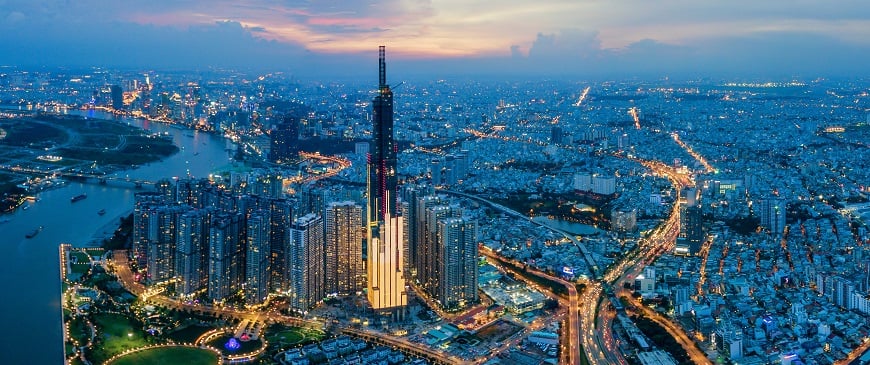
2023 was a good year for trade in Vietnam. According to the General Statistics Office of Vietnam, the import and export goods turnover in Vietnam reached 683 billion USD, with a trade surplus of 26 billion USD, more than double that in 2022.


2023 was a good year for trade in Vietnam. According to the General Statistics Office of Vietnam, the import and export goods turnover in Vietnam reached 683 billion USD, with a trade surplus of 26 billion USD, more than double that in 2022.

… well, not all of them luckily!!! But, just like Bob Dylan's song that inspired the title, my less-so-poetic commentary is a rallying call for consideration of the impending changes in the HS2022 update.
Some background to set the mood: the Harmonized System is a convention comprising the nomenclature for the classification of products in cross-border trade. The nomenclature is a hierarchical structure consisting of product categories/subcategories and descriptions, represented in a six-digit numerical code (HS Code). The HS Codes enable Customs and other governmental authorities to categorize what is being imported or exported. Within the 200+ countries adhering to the Harmonized System, the six-digit HS Code is expanded at a national tariff level and includes additional digits for further sub-categorization. A Tariff Classification is commonly between 8-12 digits for most countries.
Every 5-6 years the World Customs Organization (WCO) updates the Harmonized System to accommodate new products, to more specifically categorize certain products, address environmental/social concerns, or to provide more clarity and transparency. On 1st January 2022, the codes they are a-changin'!
Major Changes
There are 351 amendments in HS2022.
The summary provided below, and especially the examples used, are not a comprehensive or exhaustive list of changes.
They are simply provided for illustration purposes.
Changes in HS2022 include:
Topics: HS Classification
Whilst a few things are bigger than the original, and most are bigger than the remake, the Asbestos issue for importers in Australia is certainly up there.
First and foremost, Asbestos is no joking matter. I will refrain from the scientific explanations (not my forte) but suffice to say that Asbestos is bad and can cause significant respiratory issues, cancer, and death. Rightfully, the Australian Government has taken steps to limit people’s exposure to Asbestos and Asbestos Containing Material (ACM) by introducing, amongst other measures, a total import and export ban in 2003.
Topics: South Pacific
It’s beginning to look a lot like Christmas… an Aussie Christmas with sunny skies, blistering heat, packed beaches and rapidly depreciating personal bank accounts. But if that’s not enough to get you excited, there is, of course, the recently released Goods Compliance Update (“The Update”) from the Australian Border Force (“ABF”).
The Update aims to highlight pertinent issues identified by the ABF, compliance areas of focus, and provides some statistics on the Compliance Programme results for the 2015/2016 Financial year. I’ll reiterate that second point - the ABF highlight the compliance areas of focus, hence if your activities fall within these areas it is recommended that you assess, and if appropriate address, any risks.
Topics: South Pacific, Export Consulting, Import Consulting
 Often when I ask importers about their duty liability the response I receive is, “Yes… but its only 5%.” Well if I had 5% of the 5% for every time I ask…. you get the picture. Whilst the duty paid on individual importations may not amount to a substantial cost, over time the “only 5%” can add up to significant sums. If you are still not convinced, consider what’s more challenging: expanding your sales to increase net profit by 5%, or reducing the cost of the imported product through duty mitigation?
Often when I ask importers about their duty liability the response I receive is, “Yes… but its only 5%.” Well if I had 5% of the 5% for every time I ask…. you get the picture. Whilst the duty paid on individual importations may not amount to a substantial cost, over time the “only 5%” can add up to significant sums. If you are still not convinced, consider what’s more challenging: expanding your sales to increase net profit by 5%, or reducing the cost of the imported product through duty mitigation?
I suspect many of you have continued reading, so allow me to introduce a valuable duty mitigation method: the Tariff Concession System. In Australia the Tariff Concession System was designed to help industry become more competitive in the international markets by allowing duty-free importation of certain products that are eligible for a Tariff Concession Order (TCO). Upon application, a TCO is made in respect of goods if substitutable goods are not produced in Australia, in the ordinary course of business. In this context, substitutable goods are Australian produced goods which have a use corresponding to a use of the imported goods. A number of goods are excluded from TCO eligibility, such as clothing, foodstuffs and some passenger motor vehicles.
Topics: Duty Drawback, Free Trade Agreements, South Pacific